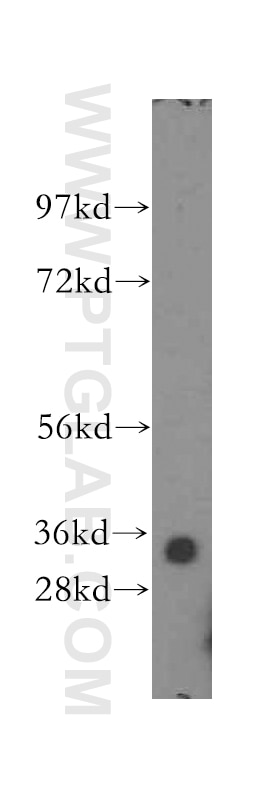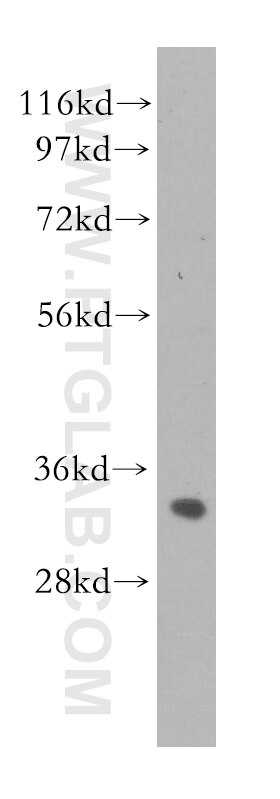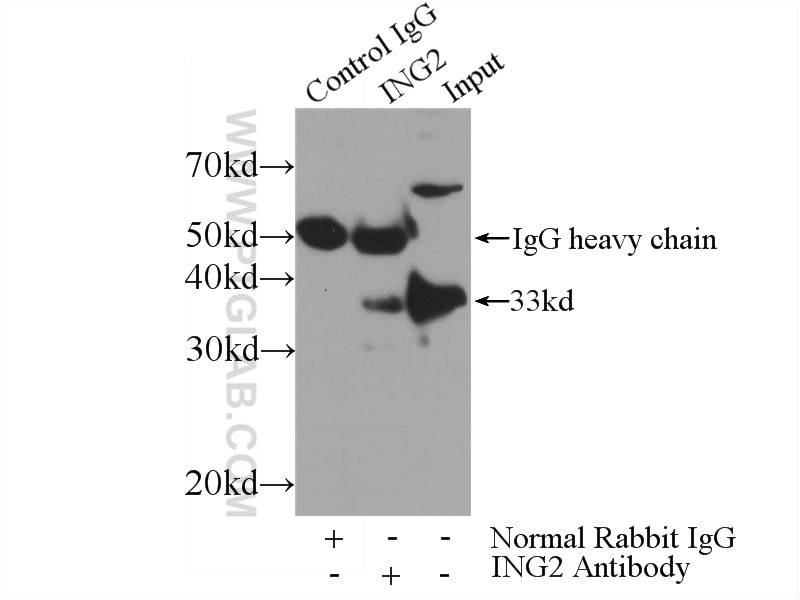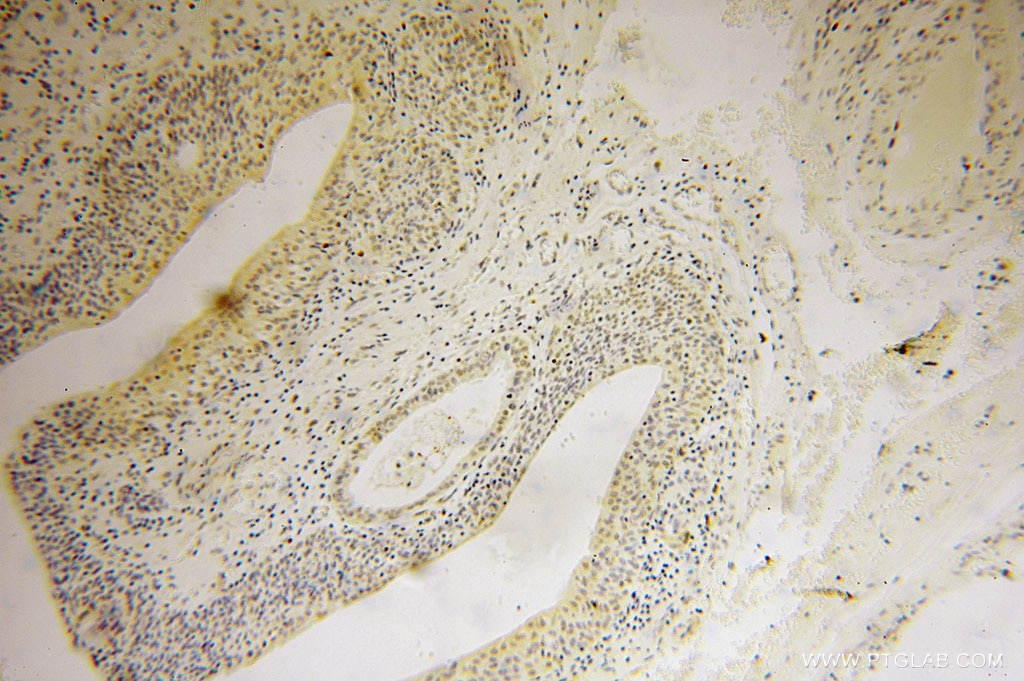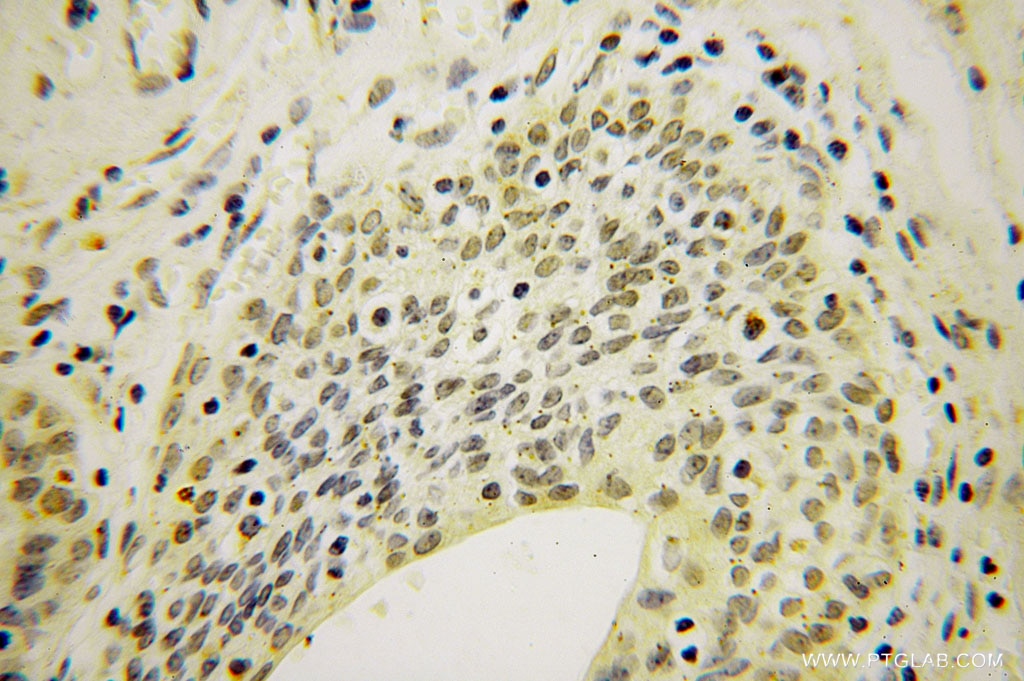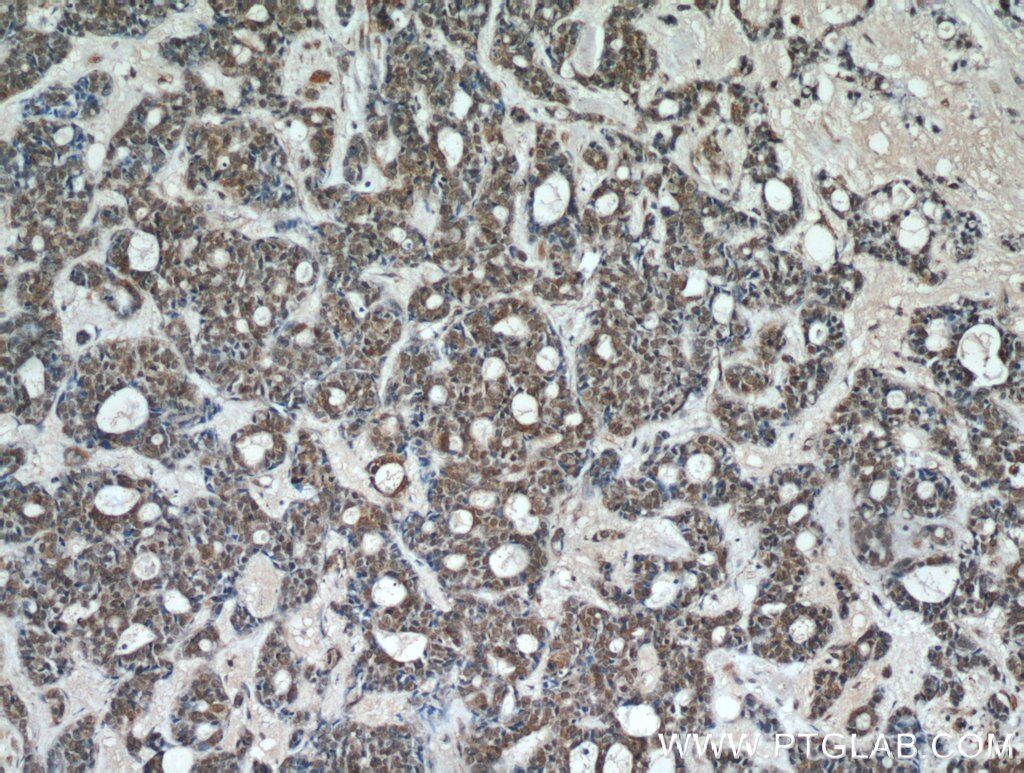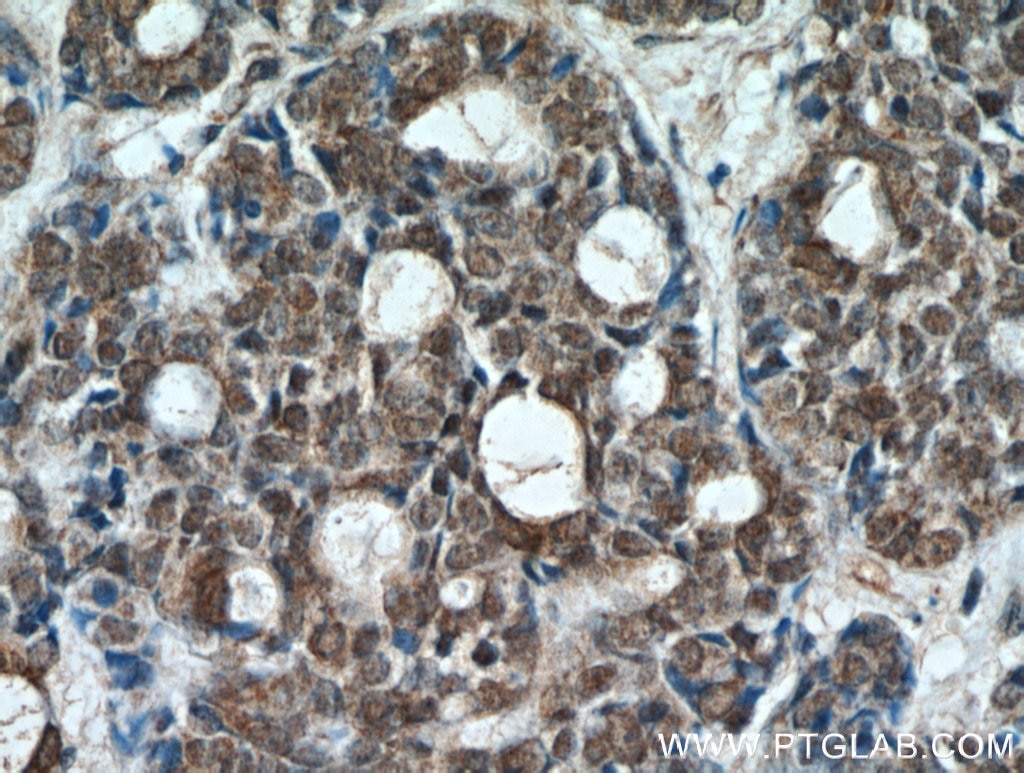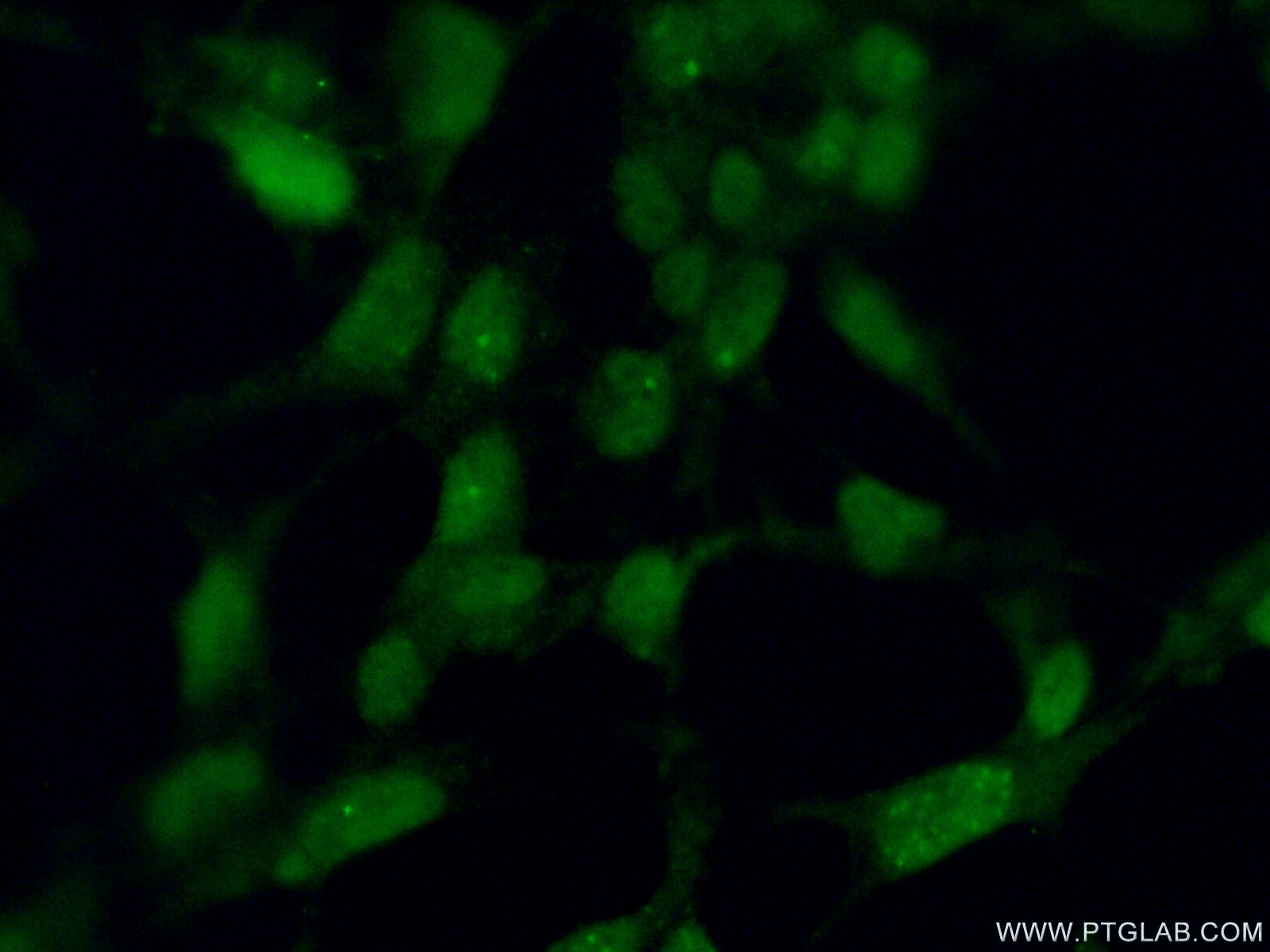- Featured Product
- KD/KO Validated
ING2 Polyklonaler Antikörper
ING2 Polyklonal Antikörper für WB, IHC, IF/ICC, IP, ELISA
Wirt / Isotyp
Kaninchen / IgG
Getestete Reaktivität
human, Maus, Ratte
Anwendung
WB, IHC, IF/ICC, IP, ELISA
Konjugation
Unkonjugiert
Kat-Nr. : 11560-1-AP
Synonyme
Galerie der Validierungsdaten
Geprüfte Anwendungen
| Erfolgreiche Detektion in WB | HEK-293-Zellen, humanes Lebergewebe |
| Erfolgreiche IP | HEK-293-Zellen |
| Erfolgreiche Detektion in IHC | humanes Kolonkarzinomgewebe, humanes Zervixkarzinomgewebe Hinweis: Antigendemaskierung mit TE-Puffer pH 9,0 empfohlen. (*) Wahlweise kann die Antigendemaskierung auch mit Citratpuffer pH 6,0 erfolgen. |
| Erfolgreiche Detektion in IF/ICC | HEK-293-Zellen |
Empfohlene Verdünnung
| Anwendung | Verdünnung |
|---|---|
| Western Blot (WB) | WB : 1:500-1:1000 |
| Immunpräzipitation (IP) | IP : 0.5-4.0 ug for 1.0-3.0 mg of total protein lysate |
| Immunhistochemie (IHC) | IHC : 1:20-1:200 |
| Immunfluoreszenz (IF)/ICC | IF/ICC : 1:50-1:500 |
| It is recommended that this reagent should be titrated in each testing system to obtain optimal results. | |
| Sample-dependent, check data in validation data gallery | |
Veröffentlichte Anwendungen
| KD/KO | See 3 publications below |
| WB | See 7 publications below |
| IHC | See 3 publications below |
| IF | See 1 publications below |
| IP | See 1 publications below |
Produktinformation
11560-1-AP bindet in WB, IHC, IF/ICC, IP, ELISA ING2 und zeigt Reaktivität mit human, Maus, Ratten
| Getestete Reaktivität | human, Maus, Ratte |
| In Publikationen genannte Reaktivität | human, Maus |
| Wirt / Isotyp | Kaninchen / IgG |
| Klonalität | Polyklonal |
| Typ | Antikörper |
| Immunogen | ING2 fusion protein Ag2121 |
| Vollständiger Name | inhibitor of growth family, member 2 |
| Berechnetes Molekulargewicht | 280 aa, 33 kDa |
| Beobachtetes Molekulargewicht | 33 kDa |
| GenBank-Zugangsnummer | BC030128 |
| Gene symbol | ING2 |
| Gene ID (NCBI) | 3622 |
| Konjugation | Unkonjugiert |
| Form | Liquid |
| Reinigungsmethode | Antigen-Affinitätsreinigung |
| Lagerungspuffer | PBS mit 0.02% Natriumazid und 50% Glycerin pH 7.3. |
| Lagerungsbedingungen | Bei -20°C lagern. Nach dem Versand ein Jahr lang stabil Aliquotieren ist bei -20oC Lagerung nicht notwendig. 20ul Größen enthalten 0,1% BSA. |
Hintergrundinformationen
ING2, also named as ING1L, belongs to the ING family and contains a PHD-type zinc finger. It is induced by the DNA-damaging agent neocarzinostatin. As a candidate tumor suppressor, ING2 seems to be involved in p53/TP53 activation and p53/TP53-dependent apoptotic pathways, probably by enhancing acetylation of p53/TP53. It is a component of a mSin3A-like corepressor complex, which is probably involved in deacetylation of nucleosomal histones. Recent finding reported that ING2 regulates muscle differentiation by regulating chormatin remodeling program. Catalog#11560-1-AP is a rabbit polyclonal antibody raised against full length ING2 of human origin.
Protokolle
| Produktspezifische Protokolle | |
|---|---|
| WB protocol for ING2 antibody 11560-1-AP | Protokoll herunterladen |
| IHC protocol for ING2 antibody 11560-1-AP | Protokoll herunterladen |
| IF protocol for ING2 antibody 11560-1-AP | Protokoll herunterladen |
| IP protocol for ING2 antibody 11560-1-AP | Protokoll herunterladen |
| Standard-Protokolle | |
|---|---|
| Klicken Sie hier, um unsere Standardprotokolle anzuzeigen |
Publikationen
| Species | Application | Title |
|---|---|---|
Mol Cell Proteomics Human family with sequence similarity 60 member A (FAM60A) protein: a new subunit of the Sin3 deacetylase complex. | ||
Chem Biol Deacetylase inhibitors dissociate the histone-targeting ING2 subunit from the Sin3 complex.
| ||
Cancers (Basel) Antithetic hTERT Regulation by Androgens in Prostate Cancer Cells: hTERT Inhibition Is Mediated by the ING1 and ING2 Tumor Suppressors.
| ||
Front Cell Dev Biol ING2 Controls Mitochondrial Respiration via Modulating MRPL12 Ubiquitination in Renal Tubular Epithelial Cells.
| ||
Cancer Lett Decreased expression of ING2 gene and its clinicopathological significance in hepatocellular carcinoma. | ||
Biochem J Histone H3 N-terminal mimicry drives a novel network of methyl-effector interactions. |
